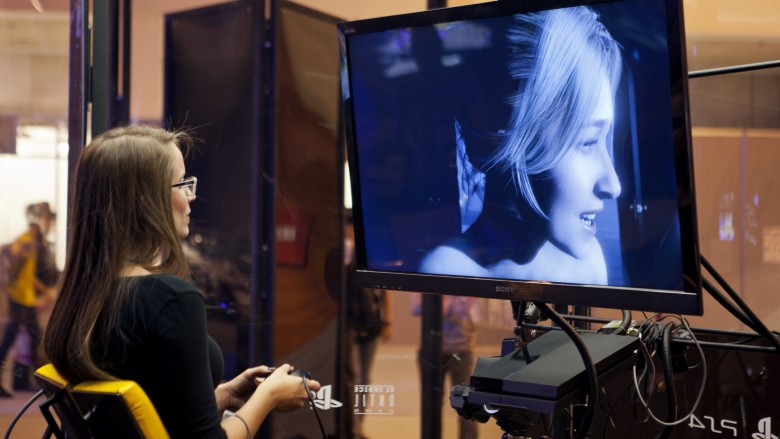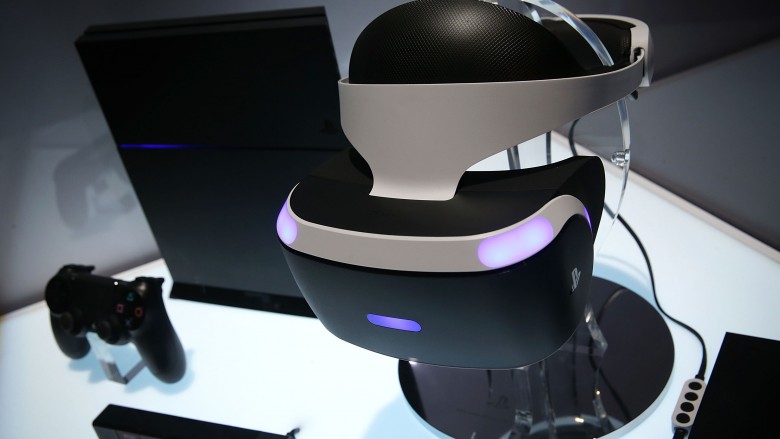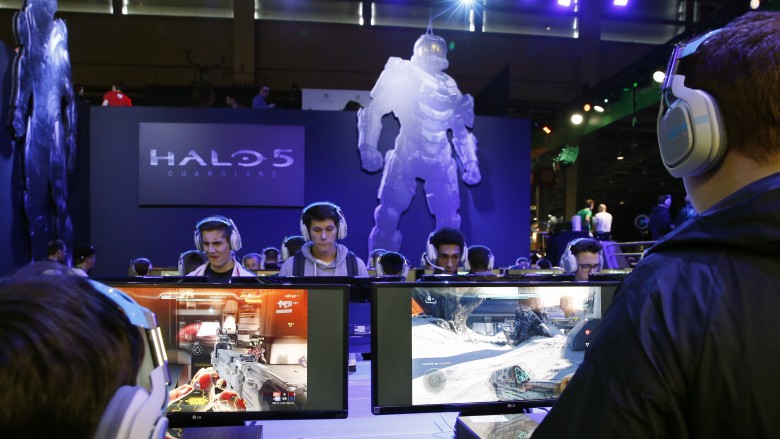How Sony And Microsoft Could Compete With Nintendo Switch
Nintendo has the distinction of developing and publishing its consoles' most popular franchises, like Mario Bros., Super Smash Bros., Mario Kart, Zelda, Donkey Kong, and Metroid. Although Sony and Microsoft do make their own exclusive hits, their consoles' success or failure depends ultimately on third-party support. With the unique functionality and mobility of the Switch, together with an unprecedented show of support for third-party developers, Nintendo has reset the tone in the world of console gaming. Here are our suggestions for what Sony and Microsoft can do to rise above the incoming rush of Nintendo Switch-related pandemonium.
Play to their strengths and aim at hardcore gamers
Nintendo's obsession with kawaii wholesomeness has become pathological. Remember when they outlawed daytime access to mature content in their online shop in Europe — not just for kids but for adults, too? The whole thing was a run-in with German regulations, but just because sex, naughty language, and simulated violence make innocent heads hurt, we have to wait until the sun goes down to order Zombi U? Look, Nintendo, we're all adults here. Just ... stop. Oh, Steam's open 24/7. Maybe download Dying Light, instead.
We won't belabor this point. Nintendo eventually lifted the restriction, but the reputation still sticks with the company. Sony and Microsoft understand that adults play video games. They need to remember to play this up at every opportunity.
Lower price of online gaming
Nintendo will start charging for its online service beginning in the fall — no word yet on the price. Whatever it turns out to be, Sony and Microsoft ought to lower their rates for online gaming if they want to compete.
Online play via PlayStation Network was free on the PS3. With the PS4, Sony stunned its customer base by following Microsoft's lead, charging for PlayStation Plus accounts, without which online functionality becomes oppressively minimalistic. The current rate is $60 per year. That's the price of a new game to play the games you already own online ... every year.
Let's not pretend that paying a monthly fee to Sony means your information is more secure. This is Sony — the company that kept an unencrypted text file of passwords on a company server and called it "passwords" — we're talking about. As for Microsoft, there's no way the servers are costing them that much annually to maintain. Xbox Live and PlayStation Plus are silly holdovers. Get rid of them and the path to Sony-Microsoft cross-platform multiplayer will be clear, unless Sony throws another fit.
Lean into their superior specs
The $299 price tag sends a signal that the Nintendo Switch means to compete with the PS4 and the Xbox One. The Switch's specs, on the other hand, tell a different story. While the specifics of the Switch's "custom-built Tegra processor" have not yet been released, the native storage has — and it's not encouraging. There are just 32 GB of storage space in the entire console. Compare that with the 500 GB of the PS4 — middling by PC gaming standards — and it becomes clear that the Switch is not the console it claims to be. Rather, it's a mobile device tricked out with some really sweet features.
Nintendo's portable console-tablet hybrid has one weakness. Stop us if you've heard this one before, Sony and Microsoft: Nintendo's forthcoming console is not very powerful. Encourage software developers to make use of your respective consoles' additional teraflops, and the specs-reading tech geeks will thank you for it. Rumor has it that the Switch will only be able to muster 1 teraflop in terms of speed. An ordinary PS4 can do twice that. A PS4 Pro boasts an output of 4.2 teraflops. Microsoft's Project Scorpio, dropping in the Fall, will be capable of 6 teraflops. (That's just ridiculously fast. A single teraflop describes being able to perform 1 trillion calculations per second.)
Nintendo has a consistent record of releasing heartbreakingly underpowered consoles. The Tegra processor powering the Switch could give an Nvidia Shield a run for its money, but it's not going to be competing with other glorified gaming tablets. By Nintendo's own account, though, the Switch isn't a tablet; it's a next-gen console. That's a dangerous claim to make in an era when the PS4 and the Xbox One are considered the standards of the current generation.
Put more resources into quality exclusives
According to the Nintendo Switch Presentation 2017, there are 80 games presently in development for the console. Many of them are Switch exclusives made by Nintendo.
Nintendo is threatening Sony and Microsoft by taking a play from their playbooks and appealing to third-party support. Sony and Microsoft rely too heavily on third-party support to build their respective brands. Just two of the all-time top 10 best-selling Xbox One games are console exclusives — and of course they're both Halo games. In November 2016's list of the PS4's top 20 best sellers in the US, there wasn't a single PS4-exclusive title. In contrast, Nintendo developed all of the top 10 best-selling Wii U games as of September 2016, and naturally, they were all Wii U exclusives.
That's not the half of it. Before the presentation commenced, fans spammed the Twitch chat with requests for Starfox, Super Mario Strikers, and Pikmin. There's no shortage of exclusive intellectual properties for Nintendo to choose from.
Sony and Microsoft need to do what Nintendo does so well — invest in existing intellectual properties and build new ones. Microsoft needs to look beyond Halo and Gears of War. (Microsoft has one advantage on Sony: it can deepen its pockets by selling other Xbox One exclusives on Windows. Project Scorpio will make this even easier.)
It's not enough for Sony to make a new God of War and think that's going to be enough to sell PS4 Pros. Sony needs to turn Days Gone — or, as we like to think of it, Not the Last of Us – into a hit in its own right, and then continue spitballing new franchise ideas until something else sticks.
Or do away with exclusives all together
If they want to survive the forthcoming Switch hysteria, Sony and Microsoft need to get creative. They — and we mostly mean Sony — should re-evaluate their policies on exclusives. Failing that, they ought to pool their resources and try something new, like getting PS Now to run on Project Scorpio and making a handful of Xbox Live Arcade games playable on the PS4 Pro. (Yeah, we said it.)
Stick to standard controllers and control schemes
Shinya Takahashi-san described the joycons as having "inherited DNA" from all of Nintendo's previous controller designs. The new controllers incorporate the mobility of the Gameboy; the X, Y, L, and R buttons from the SNES; the rumble functionality and joystick from the N64; the console handle of the GameCube; and the DS's touchscreen, and more. The Switch's controllers seem promising — but so did the WiiMote until we heard the awful sound of that superfluous little speaker.
Still, we admit we're intrigued by the joycons' design — but how versatile are they? How many times can they slide between the different modes before one of the little pieces breaks off? Will their joysticks go wonky after a few weeks like N64 controllers' did?
The joycons themselves are remarkably small for game controllers. (You know what they say about guys with big hands, right? They don't pre-order the Nintendo Switch because the joycons are stupidly tiny.) As for the joycons' added gyroscopic and camera-related gameplay possibilities, we'll have to see what developers do with them before we pass judgment.
Sony and Microsoft shouldn't fix what isn't broken. Xbox One and Xbox 360 controllers are great. PS4 controllers are dependable, too. Keep them as they are.
Quit flirting and fighting, and join forces already
Microsoft and Sony belong in marriage counseling. What is it with these two? It's like they get to the brink of establishing common ground and then one of them — usually Sony — throws a fit about some inconsequential detail, Microsoft makes fun of Sony, and the disagreements begin all over again. We won't rehash the sordid history here because it's just too depressing to look at. They have so much in common. They could be so good together. Why can't they see it? If we could just flick a switch...








